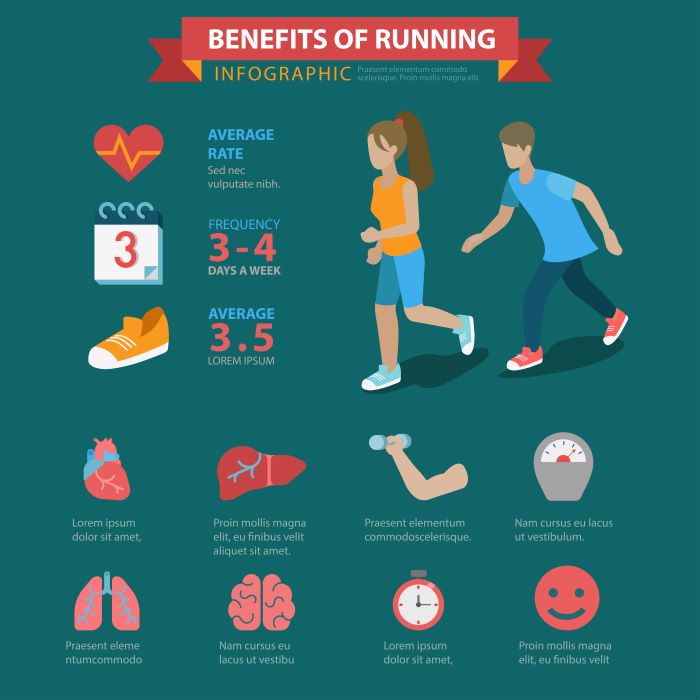Embarking on a journey towards completing a half marathon requires more than just putting on running shoes and hitting the pavement. It involves a comprehensive understanding of various training essentials that lay the foundation for success. One of the core components of effective half marathon training is building endurance, which can significantly benefit from cross-training activities like rowing.
Rowing is an excellent cross-training exercise that complements running perfectly. It engages multiple muscle groups and enhances cardiovascular fitness, making it a powerful tool in your training arsenal. Here are some key aspects to consider:
- Endurance Building: Rowing can boost your aerobic capacity, allowing you to sustain longer runs with increased efficiency.
- Strength Training: The resistance offered by rowing strengthens your core, arms, and legs, which can improve your running form and reduce the risk of injury.
- Recovery Enhancement: As a low-impact exercise, rowing provides an effective recovery workout that helps alleviate muscle soreness while still keeping you active.
To maximize the benefits of rowing in your training, it’s essential to integrate it into your weekly routine strategically. This will not only enhance your overall performance but also make your training more varied and enjoyable. Visit our website to learn more and get started today! Click here.
The Benefits of Incorporating Rowing

Incorporating rowing into your half marathon training routine offers a multitude of benefits that can enhance your overall performance. This versatile exercise not only complements your running regimen but also contributes to a well-rounded fitness approach. Here are some key advantages of adding rowing to your training:
- Improved Cardiovascular Fitness: Rowing is an excellent aerobic workout that elevates your heart rate, helping to build endurance and stamina essential for long-distance running.
- Full-Body Workout: Unlike running, which primarily targets the lower body, rowing engages both the upper and lower body, providing a comprehensive workout that strengthens muscles throughout.
- Injury Prevention: The low-impact nature of rowing reduces stress on joints, making it a safer alternative for cross-training. This can help mitigate the risks associated with overuse injuries common in runners.
- Enhanced Core Strength: A strong core is vital for maintaining proper running form. Rowing promotes core engagement, which translates to better stability and efficiency while running.
- Variety and Motivation: Incorporating rowing into your routine can break the monotony of standard running workouts, keeping your training fresh and motivating.
By embracing rowing as part of your half marathon training, you can unlock these benefits and elevate your performance to new heights. The combination of running and rowing creates a powerful synergy that helps you reach your fitness goals.
Designing a Rowing Workout Plan

Creating a tailored rowing workout plan is essential for maximizing the benefits of this cross-training exercise in your half marathon training. A well-structured rowing routine not only enhances your endurance but also complements your running schedule. Here’s how to design an effective rowing workout plan:
- Determine Your Goals: Identify what you aim to achieve with rowing—whether it’s building endurance, improving strength, or enhancing recovery. This will guide your workout intensity and duration.
- Frequency: Aim for 2 to 3 rowing sessions per week, ideally on days when you have lighter running workouts or rest days. This allows your body to recover from running while still improving cardiovascular fitness.
- Workout Structure: Incorporate a mix of steady-state rowing and interval training. For example:
- Steady-State: Row at a moderate pace for 20-30 minutes, focusing on maintaining a consistent stroke rate.
- Intervals: Alternate between high-intensity rowing for 1-2 minutes and recovery rowing for 2-3 minutes. Repeat for 20-30 minutes to build speed and power.
- Monitor Technique: Pay attention to your rowing form. Focus on engaging your core, using your legs effectively, and maintaining a smooth stroke to prevent injury.
- Progression: Gradually increase the duration and intensity of your rowing workouts as your fitness improves. This helps avoid plateaus and keeps your training challenging.
By following these guidelines, you can create a rowing workout plan that not only enhances your half marathon training but also keeps you engaged and motivated throughout your fitness journey.
Integrating Rowing with Running Workouts

Integrating rowing with your running workouts can significantly enhance your overall fitness and performance, especially when preparing for a half marathon. This cross-training approach helps build strength, improve endurance, and reduce the risk of injury by providing a balanced workout routine. Here’s how to effectively combine rowing and running:
- Plan Your Weekly Schedule: Design a balanced weekly workout schedule that includes both rowing and running. For instance, you might run three days a week and row on two non-consecutive days. Ensure that you allow for at least one rest day to promote recovery.
- Complementary Workouts: Use rowing as a low-impact alternative on days when you have more intense running sessions. For example, after a long run, you could follow up with a gentle, steady-state rowing session to aid recovery.
- Cross-Training Sessions: On days dedicated to cross-training, consider combining rowing intervals with short runs. For example, you could perform a rowing interval workout followed by a short 10-15 minute run at a comfortable pace. This keeps your heart rate elevated while engaging different muscle groups.
- Brick Workouts: Try a brick workout, which involves transitioning from rowing to running quickly. For example, row for 20 minutes at a high intensity, then immediately switch to a 15-minute run. This simulates race conditions and helps your body adapt to a quick change in activity.
- Recovery Focus: Utilize rowing sessions as active recovery days. Rowing at a low intensity can help promote blood flow and speed up recovery without the impact stress associated with running.
By thoughtfully integrating rowing into your running regimen, you’ll not only build strength and endurance but also keep your training routine fresh and exciting.
Tips for Maximizing Endurance and Performance
To truly maximize your endurance and performance while incorporating rowing into your half marathon training, consider these effective tips:
- Set Clear Goals: Establish specific and attainable goals for both your running and rowing workouts. Whether it’s increasing distance, improving your pace, or enhancing your rowing technique, having clear objectives will keep you motivated and focused.
- Focus on Form: Proper technique is crucial in both rowing and running. Ensure that you maintain good posture and technique while rowing to prevent injury and maximize efficiency. Similarly, pay attention to your running form, which can lead to better performance and reduced fatigue.
- Incorporate Interval Training: Include interval training in both your rowing and running workouts. Short bursts of high-intensity effort followed by recovery periods can significantly enhance your aerobic capacity and endurance, preparing your body for the demands of a half marathon.
- Monitor Your Heart Rate: Use a heart rate monitor to track your intensity during workouts. Staying within specific heart rate zones can help you optimize your training, ensuring that you’re challenging yourself appropriately without overtraining.
- Nourish Your Body: A well-balanced diet is essential for optimal performance. Focus on consuming adequate carbohydrates, proteins, and healthy fats to fuel your workouts. Stay hydrated and consider incorporating recovery nutrition post-workout to replenish energy stores and aid muscle recovery.
- Rest and Recovery: Give your body the time it needs to recover. Schedule rest days and listen to your body, allowing for adequate recovery between intense workouts. This will help prevent burnout and keep your performance levels high.
By implementing these strategies, you can enhance your endurance and performance effectively, making the most of both running and rowing in your training regimen.
Tracking Progress and Adjusting Your Training

Monitoring your progress is essential for achieving success in half marathon training, especially when integrating rowing into your routine. Here are some effective strategies for tracking your progress and making necessary adjustments to your training:
- Keep a Training Log: Document your workouts, including running and rowing sessions. Note the distance, duration, intensity, and any personal observations. This log will help you identify patterns, track improvements, and make data-driven decisions about your training.
- Utilize Technology: Consider using fitness apps or wearable devices that can track your heart rate, pace, and overall performance. These tools provide valuable insights into your training, allowing you to analyze your progress over time.
- Schedule Regular Assessments: Every few weeks, conduct fitness assessments to evaluate your progress. This could involve time trials for running or rowing, allowing you to gauge improvements in speed and endurance.
- Adjust Your Plan as Needed: Based on your tracked data and assessments, be prepared to adjust your training plan. If you’re consistently hitting your targets, consider increasing the intensity or duration of your workouts. Conversely, if you’re struggling, it may be time to scale back and focus on recovery.
- Set Milestones: Break down your overall training goal into smaller, manageable milestones. Celebrate achieving these milestones to maintain motivation and give you a sense of accomplishment.
By diligently tracking your progress and making informed adjustments to your training, you can ensure that you’re on the right path to achieving your half marathon goals. Visit our website to learn more and get started today! Click here.


